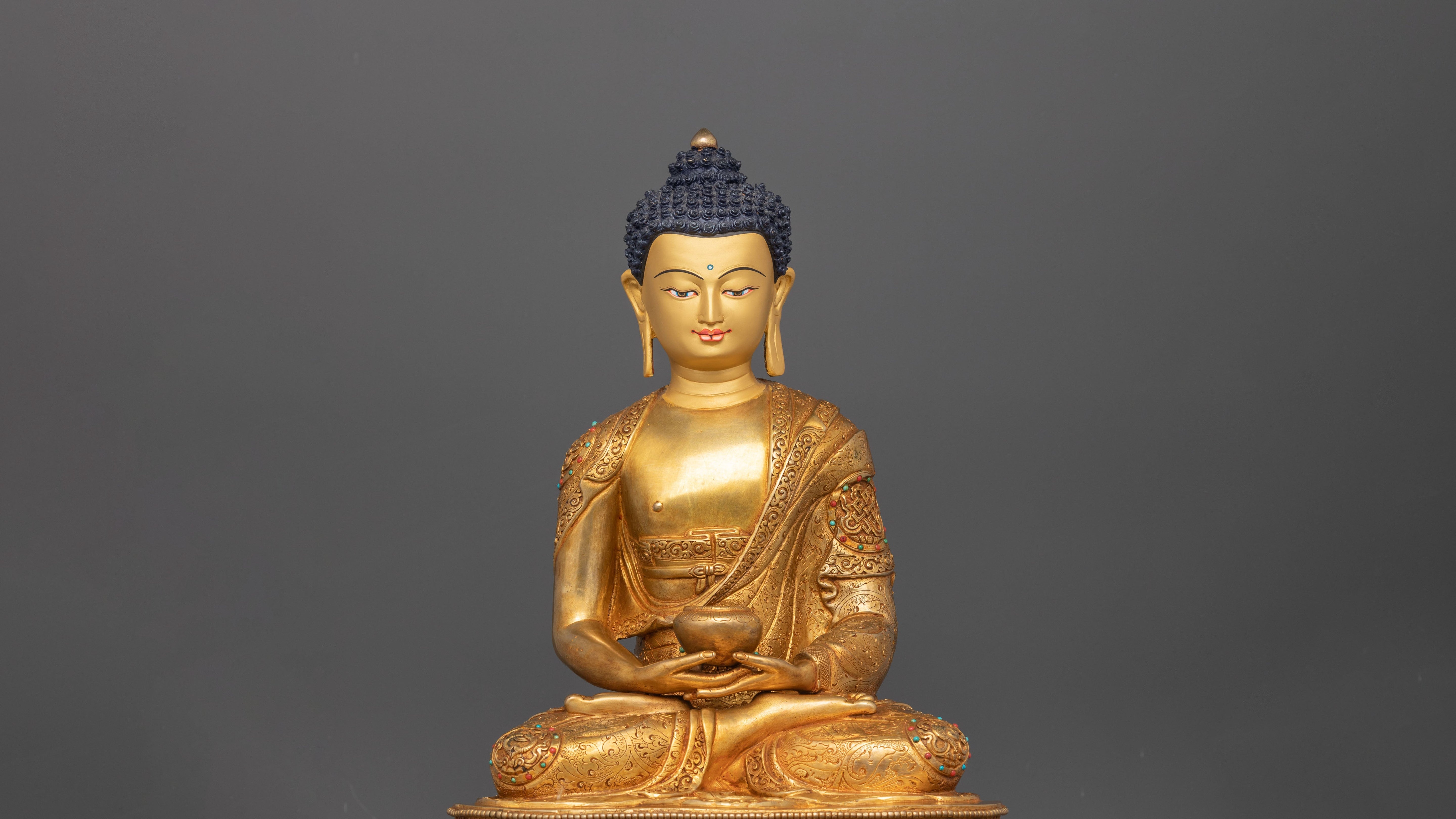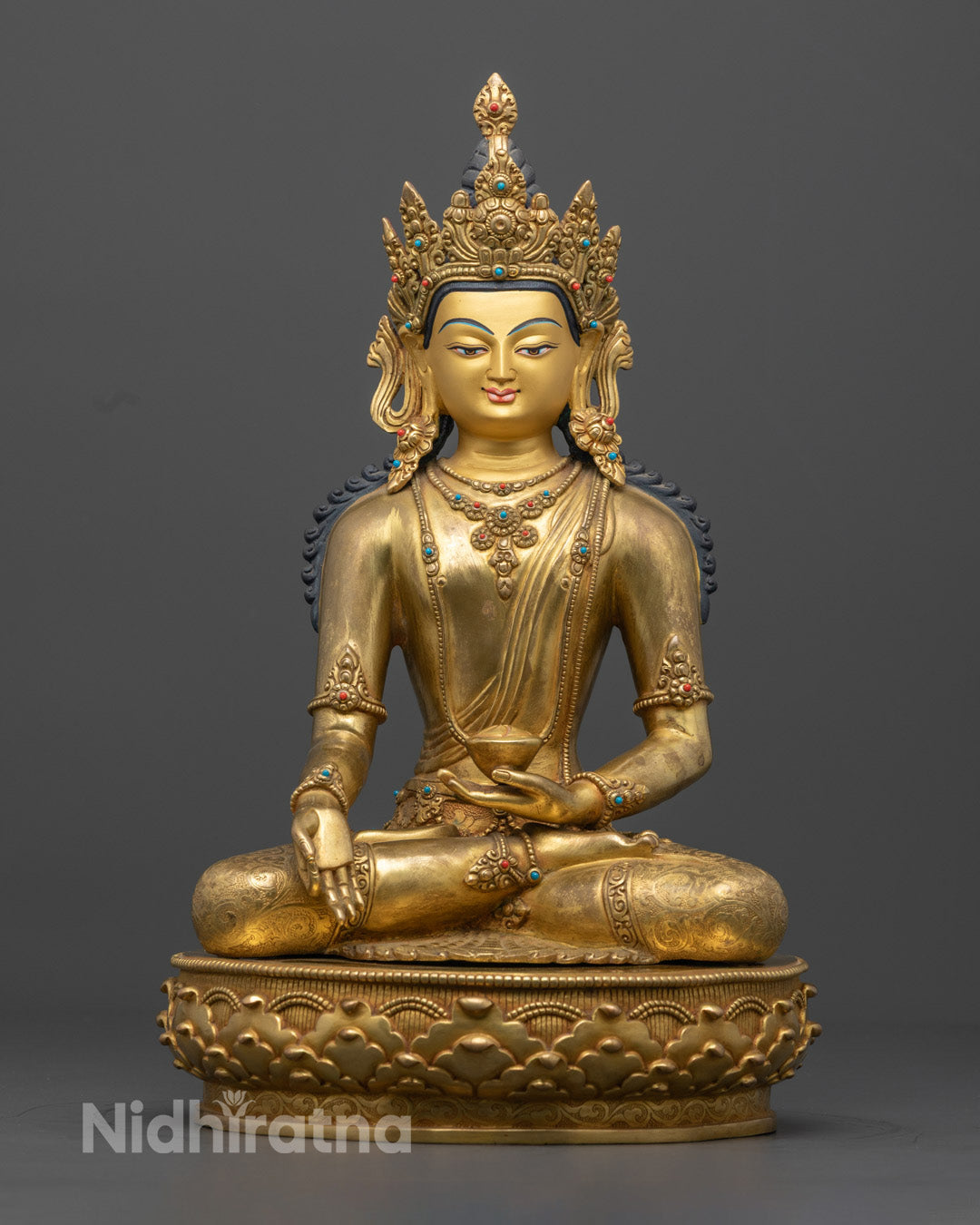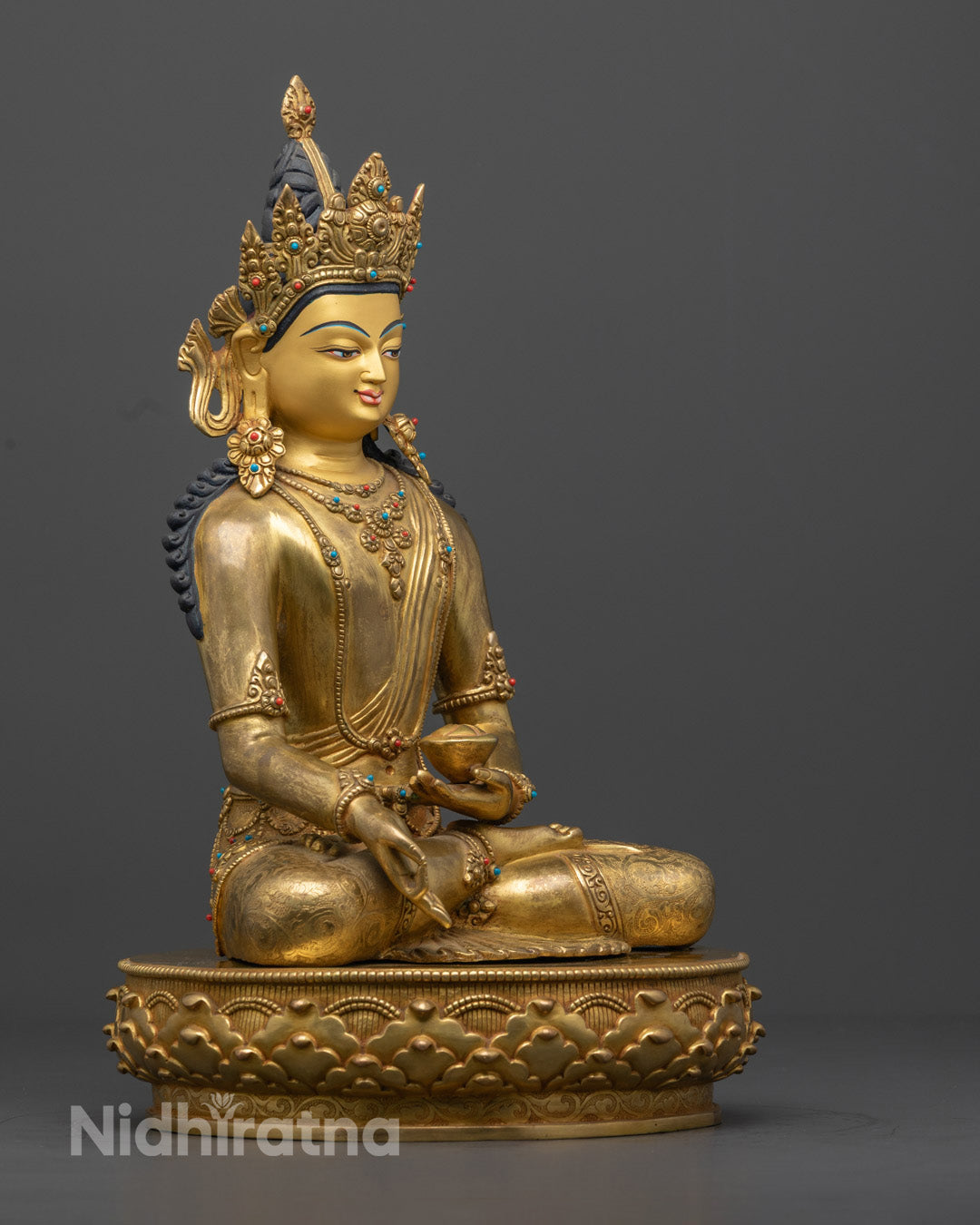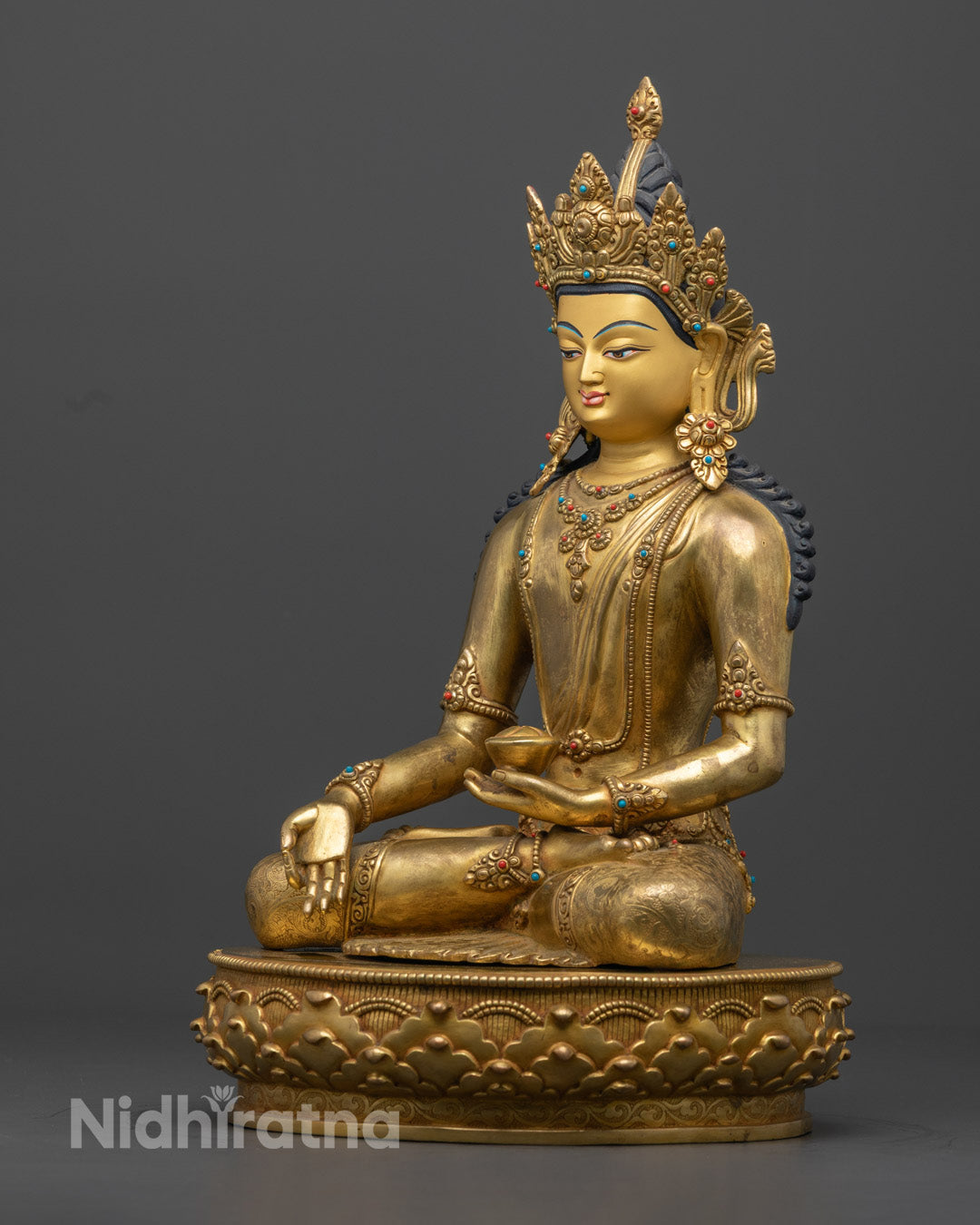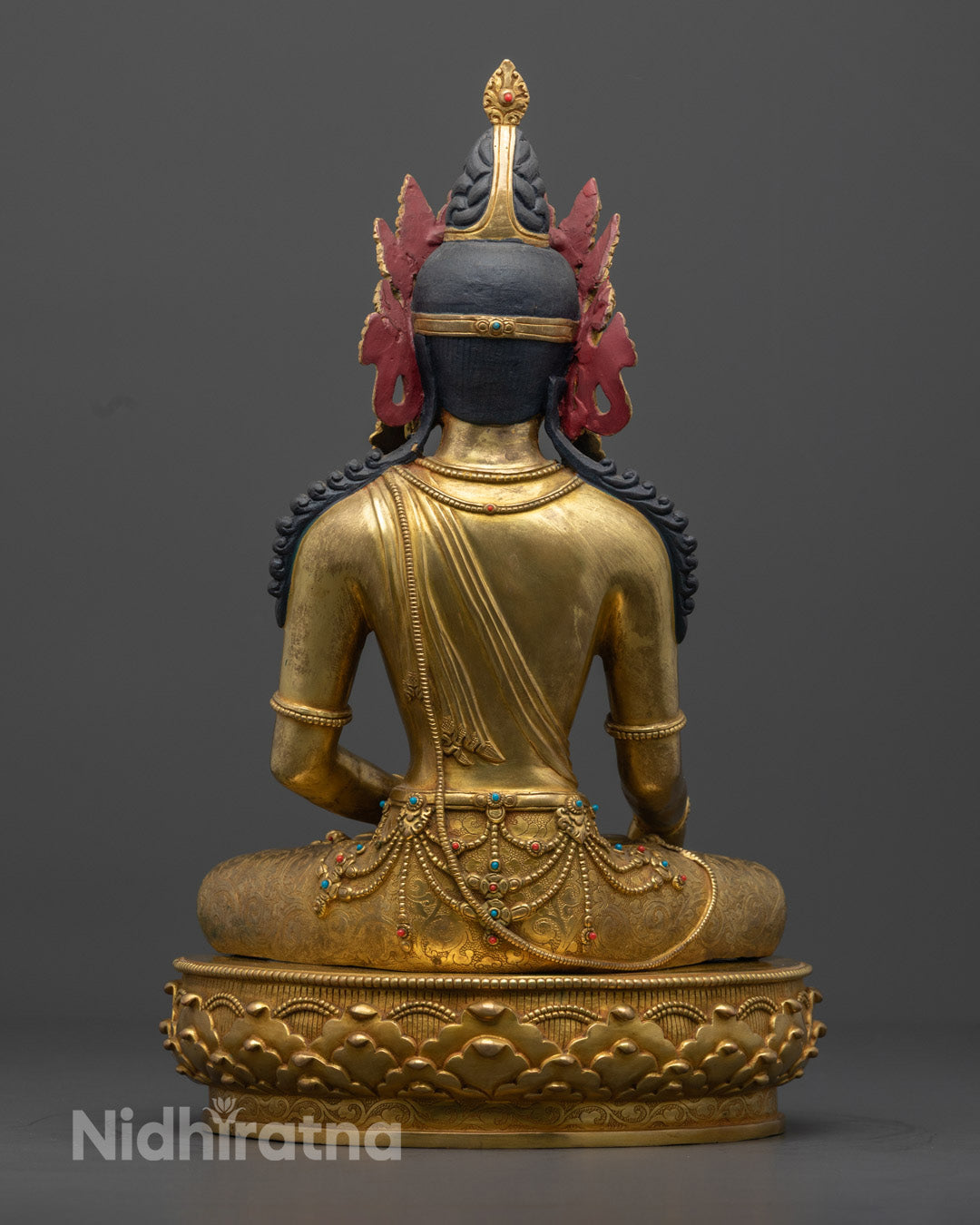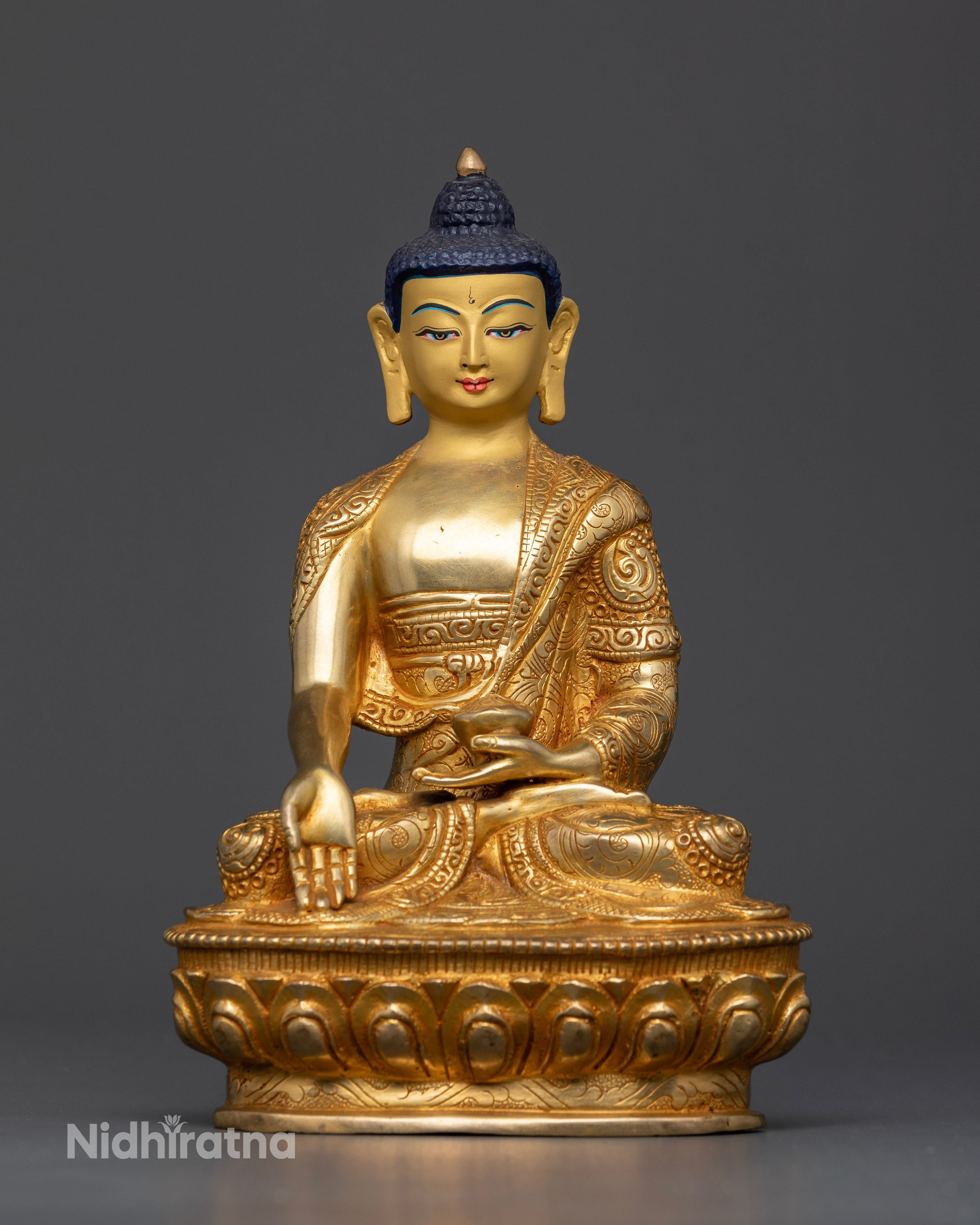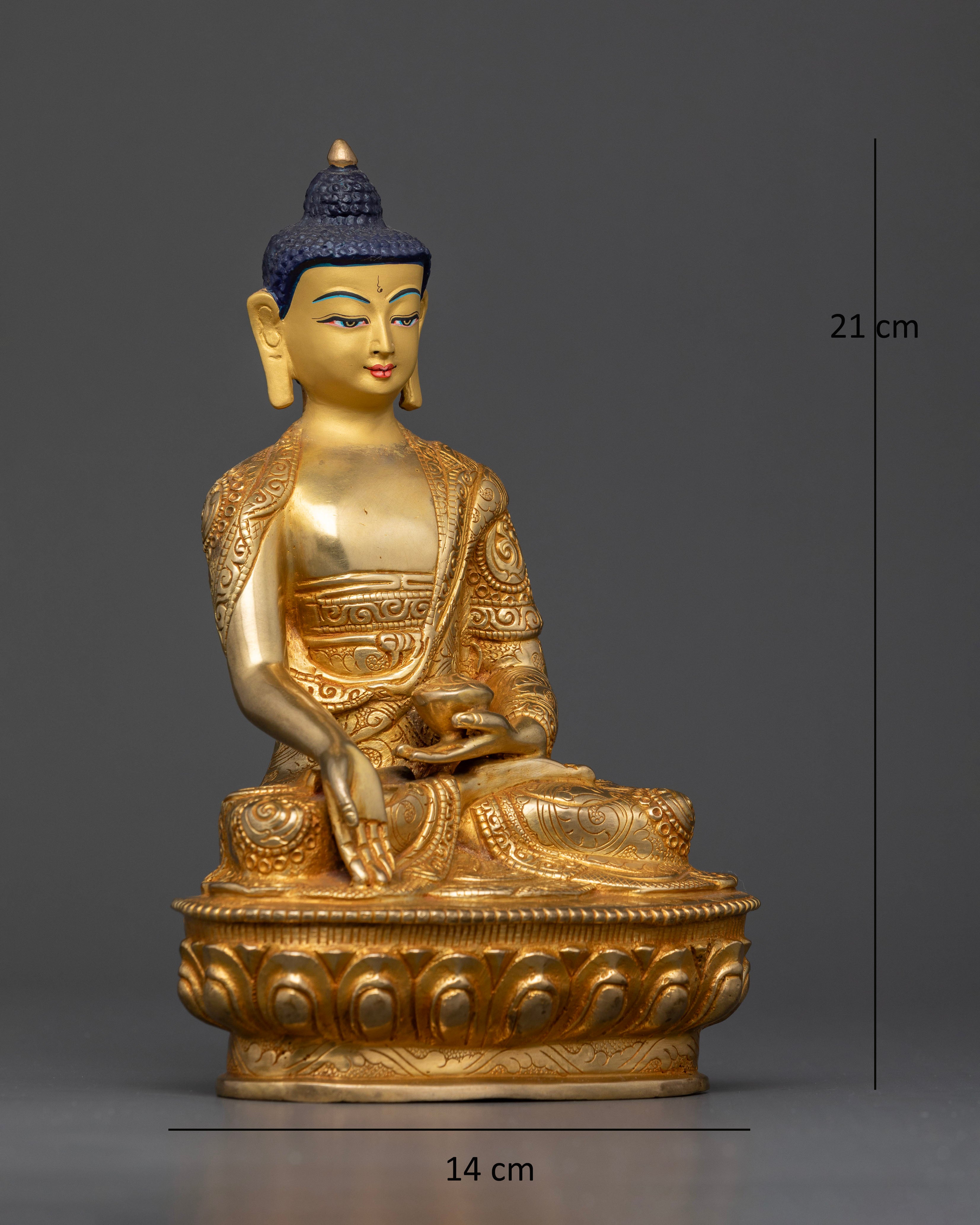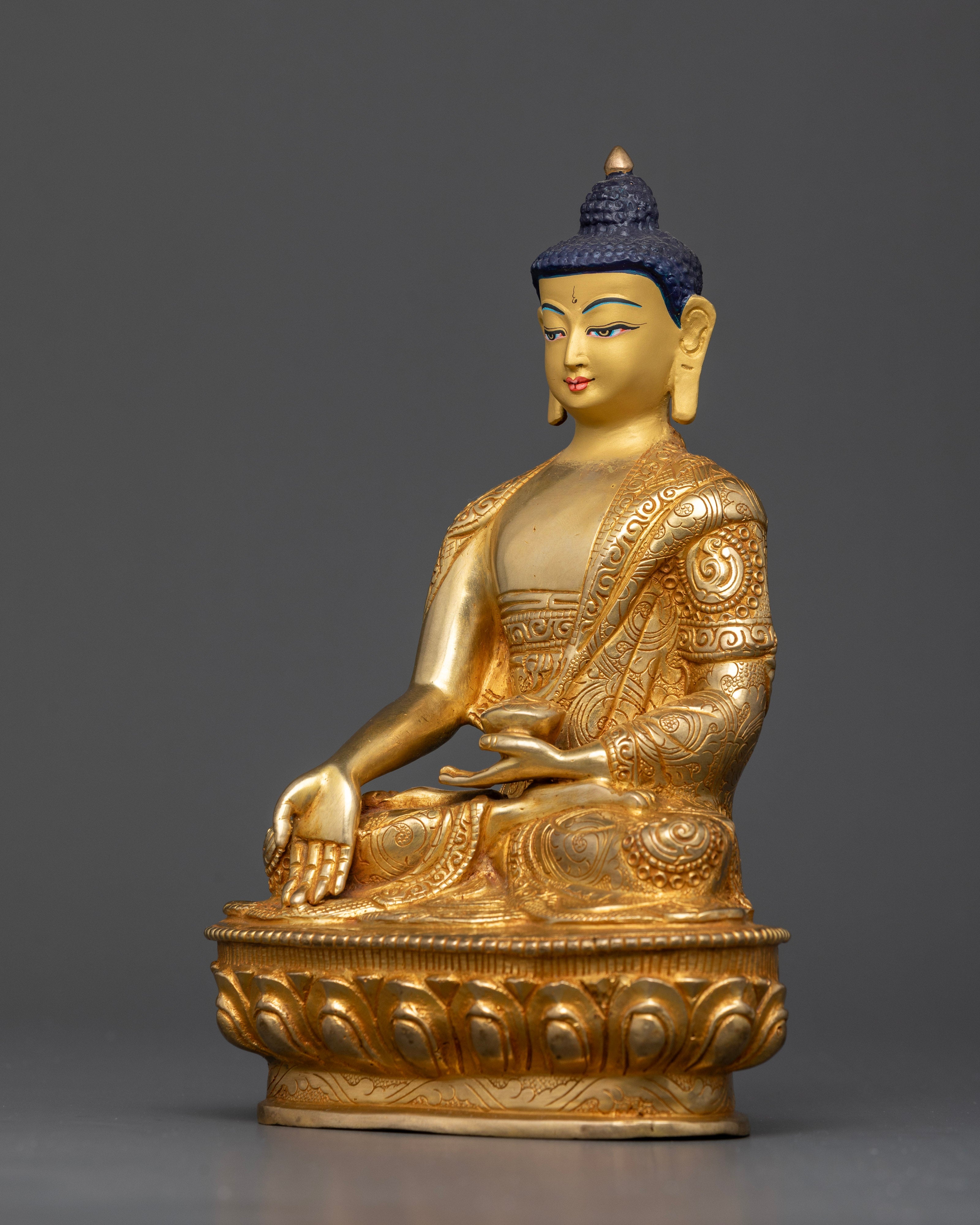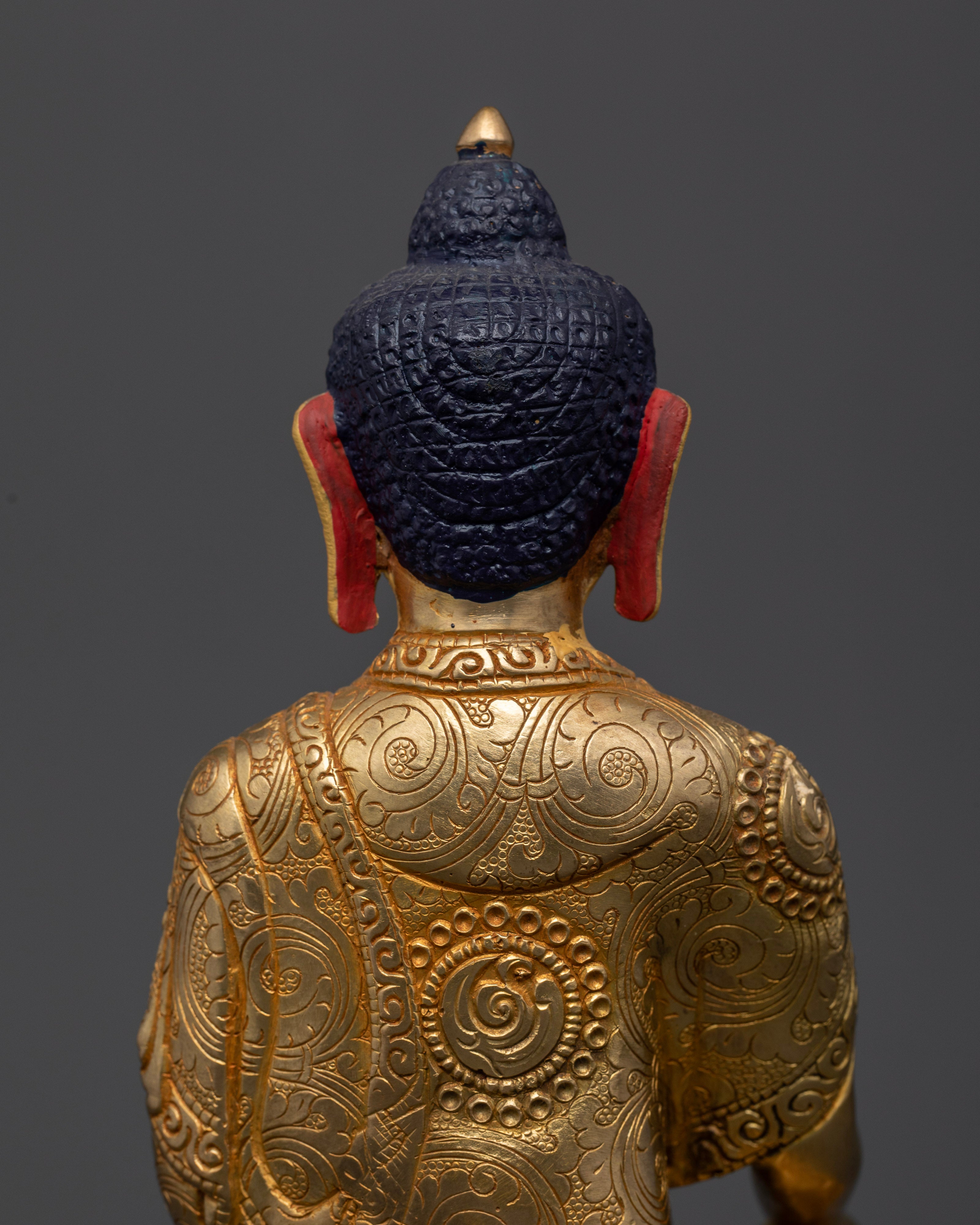Sacred Ratnasambhava Buddha | Traditional Tibetan Meditation
The Jewel-Born: Ratnasambhava Statue
Ratnasambhava Statue: Embodiment of Generosity and Equanimity
Nidhiratna's Ratnasambhava Statue is a majestic and spiritually powerful representation of the Buddha Ratnasambhava, one of the Five Wisdom Buddhas in Vajrayana Buddhism. This statue captures the essence of Ratnasambhava’s boundless generosity, equanimity, and ability to purify the negative emotions of pride and arrogance. Crafted with meticulous care by Nepalese artisans, the statue is made from high-quality materials, including a copper base with gold gilding, which highlights its divine radiance and serene beauty.
The Artistry of the Ratnasambhava Statue:
Every detail of Nidhiratna's Ratnasambhava Statue reflects the deep spiritual significance of this Wisdom Buddha. The statue's features, from the posture to the ornamentation, are crafted with a focus on symbolism and the profound qualities embodied by Ratnasambhava.
-
Gentle and Serene Posture: The statue typically depicts Ratnasambhava in a seated position, embodying the qualities of calmness and stability. His posture reflects deep meditation and a state of perfect equanimity, with his legs crossed in the lotus position, symbolizing his perfect balance and inner peace. His right hand is often extended in the gesture of granting generosity, symbolizing the Buddha’s abundant compassion and the giving nature of wisdom.
-
The Wisdom Jewel: Ratnasambhava is often depicted holding a precious jewel or a gem in his left hand, a symbol of the boundless generosity that he embodies. This jewel, called the "Ratna," is a representation of the treasures of wisdom, knowledge, and spiritual wealth. It reflects the Buddha’s infinite ability to offer assistance and fulfill the needs of all beings.
-
Gold Gilding and Copper Base: The use of gold gilding on a copper base enhances the statue’s aesthetic appeal while also symbolizing the transformative nature of wisdom. Gold represents the ultimate wisdom that shines brightly, while the copper base symbolizes the grounded nature of Ratnasambhava’s compassionate presence. The gilding reflects his divine light and power to purify negative emotions, such as pride and selfishness.
-
A Radiant Aura: Surrounding Ratnasambhava is often a halo or a divine aura, emphasizing his enlightened status and his ability to radiate wisdom and compassion to all beings. This halo symbolizes the Buddha’s illumination and the transcendent wisdom that guides followers toward enlightenment.
Spiritual Significance of Ratnasambhava:
Ratnasambhava is known as the Buddha of the South in Vajrayana Buddhism, one of the five Dhyani Buddhas who represent different aspects of Buddha nature. His wisdom is associated with the purification of pride and is often depicted as a force that transforms arrogance into humility and generosity.
-
Purification of Pride: Ratnasambhava’s primary function is to purify the emotion of pride, one of the key obstacles to spiritual growth. In his wisdom, he transforms arrogance into humility, which allows practitioners to overcome their self-centered attachments and develop a more open and generous heart.
-
Generosity and Equanimity: As the embodiment of generosity, Ratnasambhava exemplifies the importance of giving freely, without attachment or expectation of return. His equanimity represents the balance that is required in one’s spiritual practice to remain unaffected by the extremes of joy and sorrow, gain and loss. This peaceful state of mind is essential in cultivating wisdom and compassion.
-
Perfect Balance and Spiritual Wealth: The jewel that Ratnasambhava holds symbolizes the wealth of wisdom, which he freely offers to all sentient beings. The abundance of wisdom and generosity that he embodies is available to everyone, representing the wealth of knowledge that comes from compassion and selflessness. His statue serves as a visual reminder that true spiritual wealth is found in the giving of oneself to the benefit of others.
-
An Icon for Transformation: Ratnasambhava’s peaceful expression and serene posture are powerful symbols of the transformative power of wisdom. The Ratnasambhava Statue serves as a tool for meditation, guiding practitioners to develop the qualities of generosity, equanimity, and humility. Through contemplation of the statue, practitioners can seek to purify their pride and cultivate these virtues in their own lives.
Ratnasambhava's Role in the Five Wisdoms:
As one of the Five Wisdom Buddhas, Ratnasambhava represents the Wisdom of Equality, a key aspect of understanding the interconnectedness and oneness of all beings. His wisdom purifies pride and arrogance, enabling practitioners to see beyond the ego and recognize the shared essence of all sentient beings. Ratnasambhava's wisdom is often depicted as yellow, symbolizing the transformative power of clarity, and is aligned with the element of earth, grounding all wisdom in the practical reality of life.
Nidhiratna's Ratnasambhava Statue is a profound spiritual piece, embodying the timeless qualities of generosity, wisdom, and equanimity. Whether used as a focal point for meditation or displayed as a sacred object in a shrine or altar, this statue serves as both an inspiration and a guide for all practitioners seeking to purify their minds, cultivate generosity, and maintain balance in their spiritual practice.
This exquisite statue is more than a work of art—it is a spiritual tool that invites practitioners to develop humility, open their hearts to compassion, and transform their pride into selfless giving. Nidhiratna's Ratnasambhava Statue is a powerful reminder of the path to enlightenment, showing that true wealth is found not in material possessions, but in the wisdom and generosity we offer to others.

